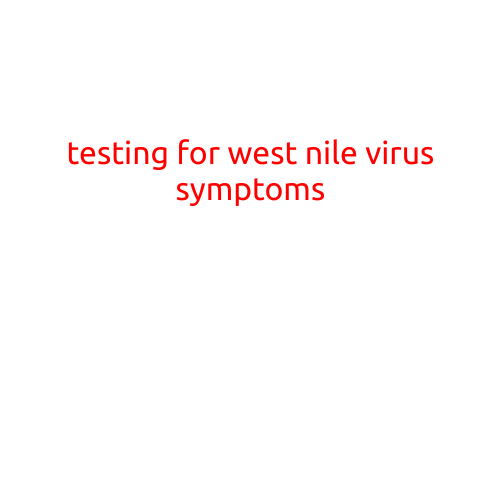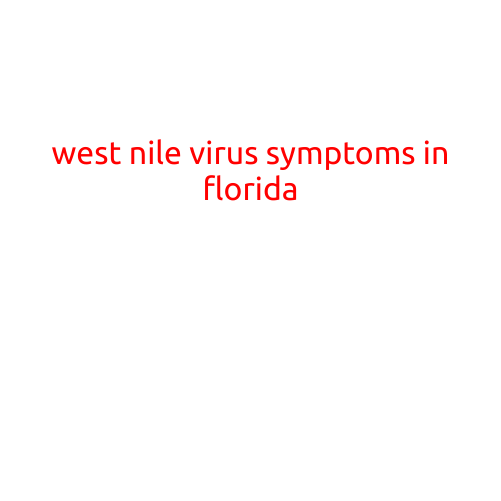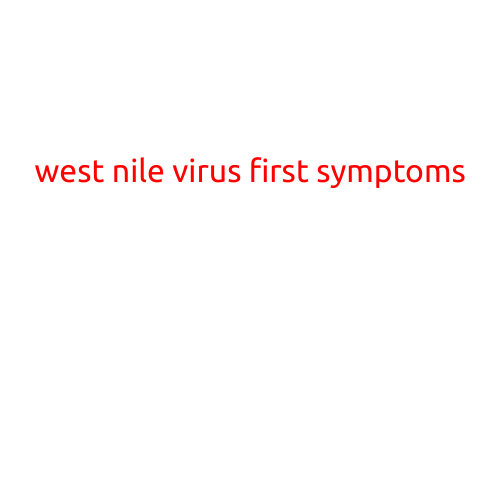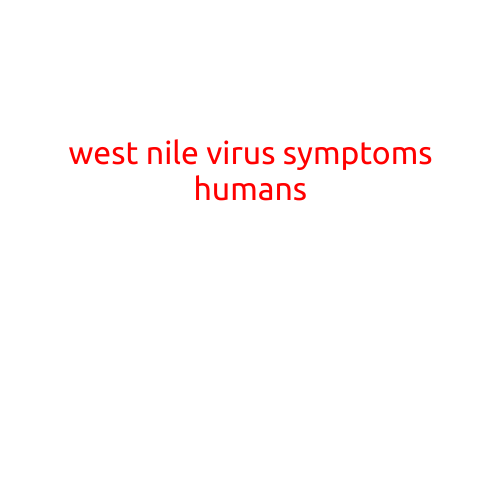
Testing for West Nile Virus Symptoms: What You Need to Know
West Nile virus (WNV) is a potentially serious illness that can cause various symptoms in humans. While most people don’t develop symptoms, those who do, may experience mild to severe illness. In this article, we’ll discuss the importance of testing for West Nile virus symptoms, the common signs and symptoms to look out for, and what steps to take if you suspect you or a loved one may have been infected with WNV.
Why Test for West Nile Virus Symptoms?
West Nile virus is a mosquito-borne disease that can have serious consequences if left untreated. According to the Centers for Disease Control and Prevention (CDC), WNV can cause:
- Mild symptoms, such as fever, headache, and body aches, in most people
- Severe symptoms, such as high fever, stiff neck, muscle weakness, paralysis, and even death, in a small percentage of people
Testing for West Nile virus symptoms is crucial, especially for individuals with weakened immune systems, such as seniors, young children, or those with chronic illnesses. Early detection and treatment can significantly improve outcomes and reduce the risk of complications.
What Are the Common Symptoms of West Nile Virus?
The common symptoms of West Nile virus include:
- Fever: A sudden onset of fever, which can range from mild to high.
- Headache: A severe headache, which can be accompanied by stiff neck.
- Body aches: Muscle and joint pain, which can be widespread.
- Fatigue: Feeling extremely tired or exhausted.
- Skin rash: A rash, which can appear on the face, arms, or legs.
In severe cases, WNV can cause:
- High fever: A fever that lasts for an extended period.
- Stiff neck: Severe stiffness in the neck.
- Muscle weakness: Weakness in the arms or legs.
- Paralysis: In some cases, WNV can cause paralysis, which can be temporary or permanent.
How Is West Nile Virus Tested?
West Nile virus is typically diagnosed through a combination of medical history, physical examination, and laboratory tests. The process includes:
- Blood tests: Blood is collected and sent to a laboratory for analysis.
- Serum tests: Serum, a liquid part of the blood, is tested for the presence of WNV antibodies.
- Cerebrospinal fluid test: In severe cases, cerebrospinal fluid (CSF) is tested for WNV.
What Are the Treatment Options for West Nile Virus?
There is no specific treatment for West Nile virus, but symptoms can be managed with:
- Rest: Getting plenty of rest.
- Pain relief: Taking medication to alleviate headache, muscle, and joint pain.
- Antiviral medication: In severe cases, antiviral medications may be prescribed.
- Supportive care: Close monitoring and supportive care, such as oxygen therapy and intravenous fluids, may be necessary.
Prevention Is Key
The best way to prevent West Nile virus is by taking simple steps to prevent mosquito bites:
- Wear protective clothing: Wear long-sleeved shirts, long pants, and socks when outdoors.
- Apply insect repellent: Use insect repellent containing DEET, picaridin, or oil of lemon eucalyptus.
- Remove standing water: Eliminate standing water around homes and buildings to reduce mosquito breeding.
Conclusion
Testing for West Nile virus symptoms is essential to ensure early detection and treatment of this potentially serious illness. By knowing the common symptoms, understanding the testing process, and taking preventive measures, you can reduce the risk of contracting WNV and enjoy a healthy, bug-free summer.





